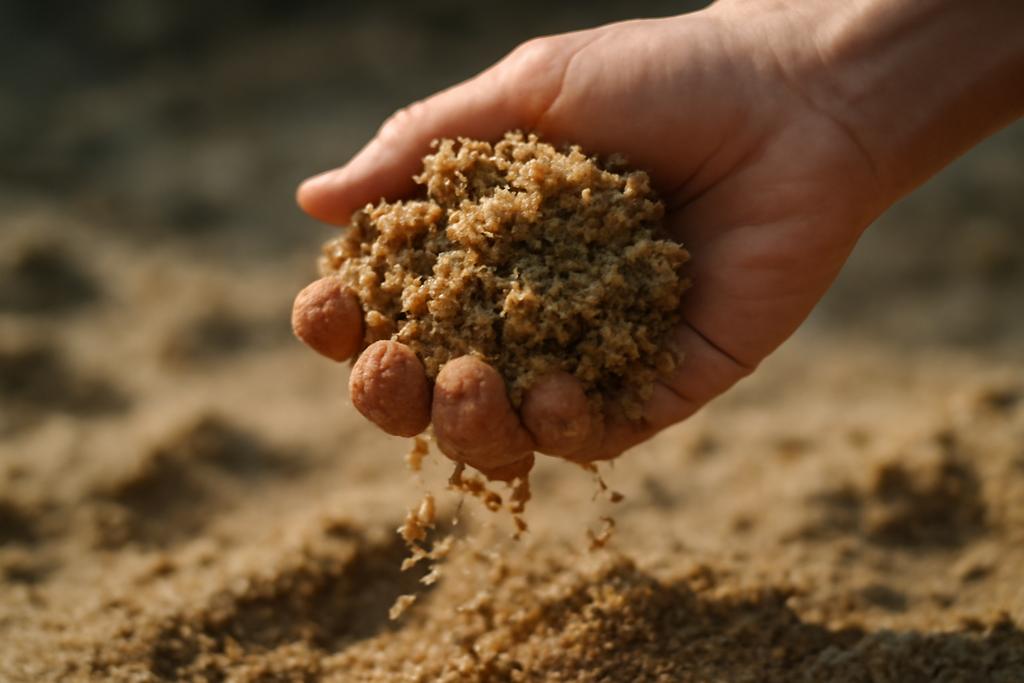The Unexpected Strength of a Little Glue
Imagine a handful of sand. It slips through your fingers, offering little resistance. Now, imagine that same sand, but with the tiniest amount of glue binding some of the grains together. Suddenly, the whole mass becomes far more robust. This seemingly simple observation is the heart of new research from the Indian Institute of Science and North Carolina State University, revealing surprising insights into the mechanics of granular materials—materials composed of many individual particles—and how even minor cohesion dramatically alters their behavior.
More Than Just Compression: The Role of Tensile Forces
The conventional wisdom about granular materials like sand, soil, or even some manufactured products focuses on compressional forces: the grains pushing against each other. But this new study, led by Abrar Naseer, Karen E Daniels, and Tejas G. Murthy, shows that even a small percentage of bonds between particles introduce a significant number of tensile forces—forces pulling the particles together. This is a crucial distinction, as these tensile forces dramatically increase the material’s overall strength and stiffness.
The researchers used an ingenious experimental setup: a quasi-two-dimensional bed of photoelastic discs—think tiny, see-through plastic circles—floating on an air cushion. This minimized friction, allowing them to isolate and measure the forces between individual particles. By selectively bonding pairs of particles with a paraffin-based wax, they could systematically control the amount of cohesion and precisely observe its effects.
From Microscopic Bonds to Macroscopic Strength: A Mesoscale Effect
The results were striking. The introduction of even a small percentage (10-25%) of bonded pairs—what the researchers call “dimers”—led to a significant increase in the material’s strength and stiffness. This wasn’t simply a matter of the bonded particles being stronger; the effect propagated outward, influencing the behavior of neighboring particles.
The researchers observed a ‘mesoscale’ effect, meaning the impact extended beyond the immediate vicinity of the bonded pairs. The dimers acted as localized force sinks, concentrating and redistributing forces throughout the material. This enhanced connectivity within the granular network translated to increased stability and resistance to external pressures.
The Power of Subtle Interactions: Implications Across Disciplines
The implications of this research are far-reaching, extending across diverse fields. In civil engineering, understanding how small amounts of cement or binding agents affect the strength of concrete or other construction materials is vital. In materials science, the ability to tune the strength and stability of granular systems opens exciting possibilities for new materials with precisely controlled properties.
The findings also have relevance to additive manufacturing, where creating strong and stable structures from granular materials is crucial. The precise control of cohesion and understanding of the mesoscale effects could lead to improved techniques for 3D printing with granular feedstocks, enabling the creation of more intricate and resilient objects.
Beyond Sand: A Universal Principle?
The study’s elegance lies in its simplicity and its broad relevance. While the experiments focused on a relatively simple system of photoelastic discs, the underlying principles likely extend to far more complex granular systems. The researchers’ meticulous control of initial conditions allowed them to isolate the effect of cohesion, avoiding the confounding factors often found in more complex natural systems.
This research provides valuable insights into how subtle interactions at a microscopic level—the addition of a small number of bonds—can lead to dramatic changes in macroscopic behavior. It highlights the critical importance of understanding the mesoscale effects, the interactions that occur at an intermediate scale between the individual particles and the overall material. By focusing on the interplay of compressional and tensile forces, this study paves the way for improved models and a deeper understanding of the mechanics of granular materials in a wide range of applications.
The Future of Granular Mechanics
The work of Naseer, Daniels, and Murthy opens new avenues for research. Further investigation into the precise mechanisms through which these mesoscale effects arise could lead to more sophisticated models and predictions of granular material behavior. This could have profound implications for various industries, from construction to pharmaceutical manufacturing.
The study’s success in isolating the effect of cohesion suggests a new pathway for investigating similar phenomena in other complex materials. By carefully controlling initial conditions and measuring the forces at a particle level, researchers may unlock further insights into the relationship between microscopic interactions and macroscopic properties in a wide range of materials. The future of understanding granular materials looks both granular and surprisingly sticky.










